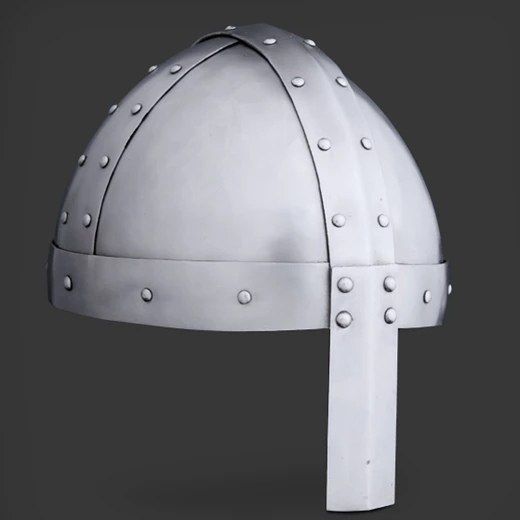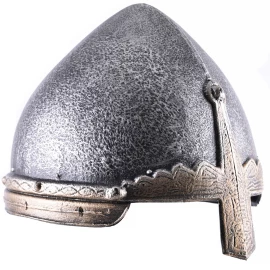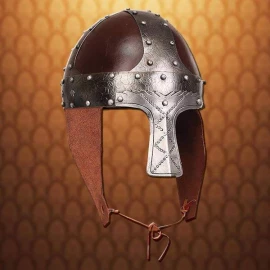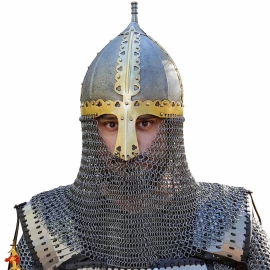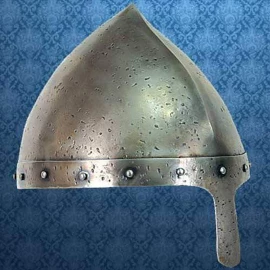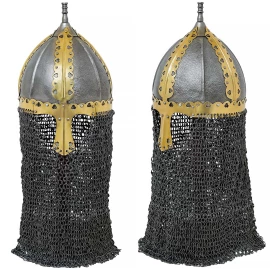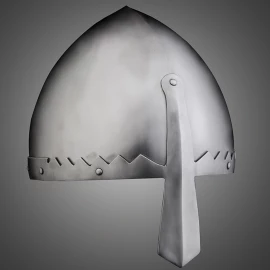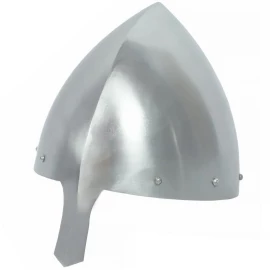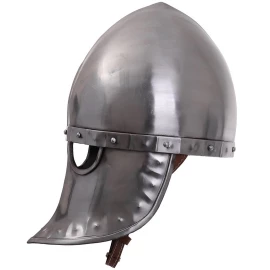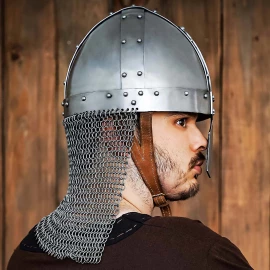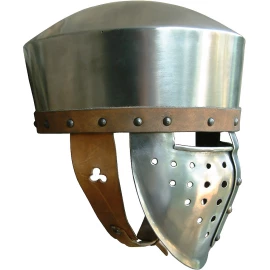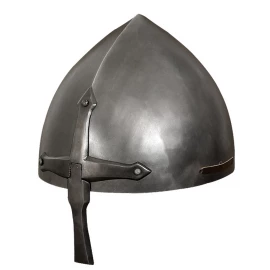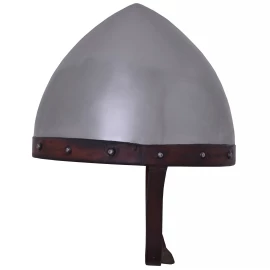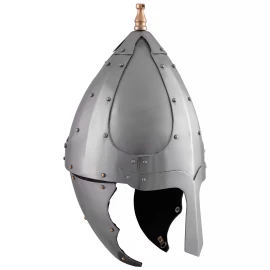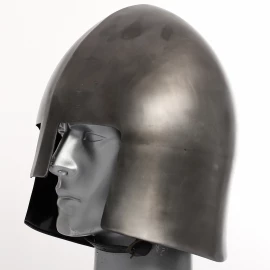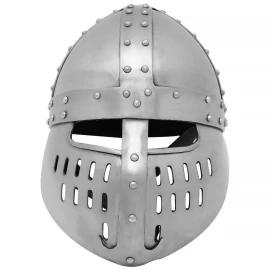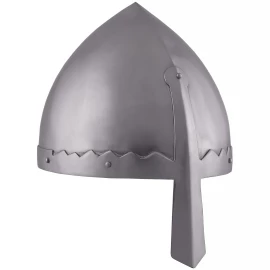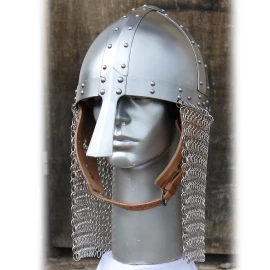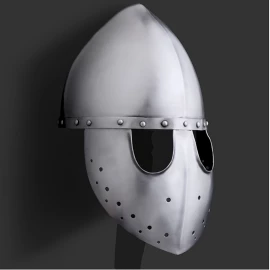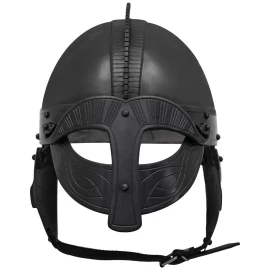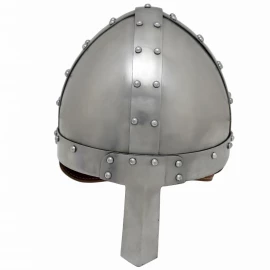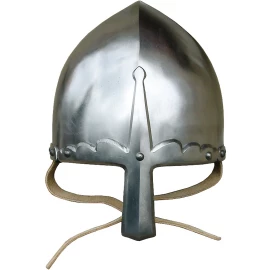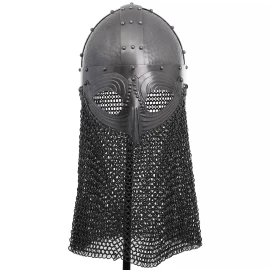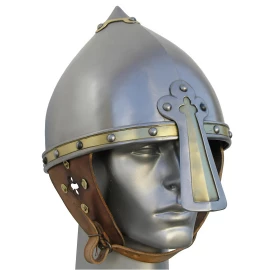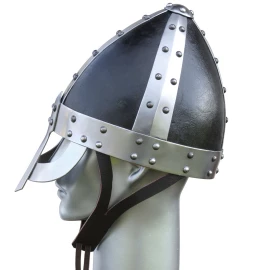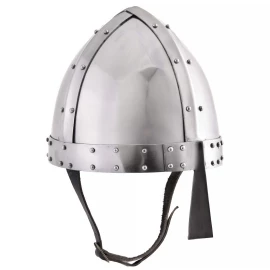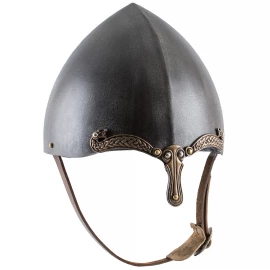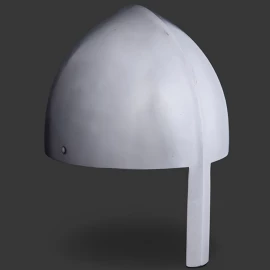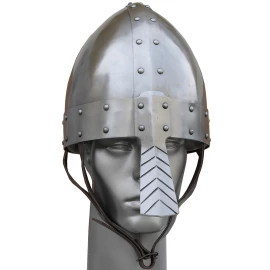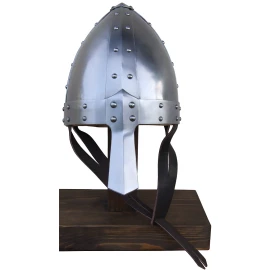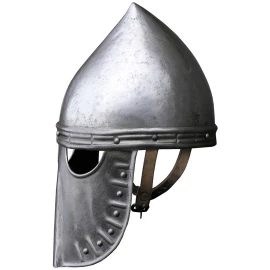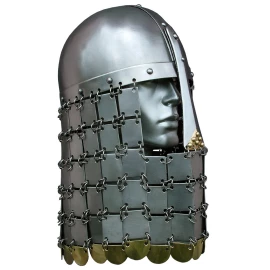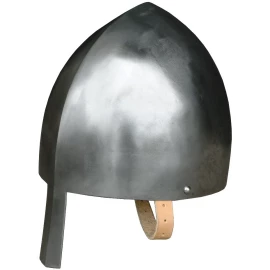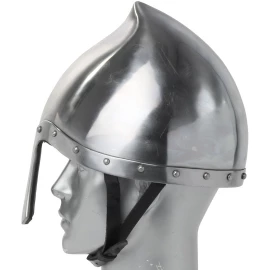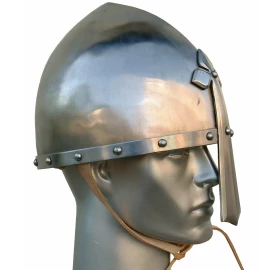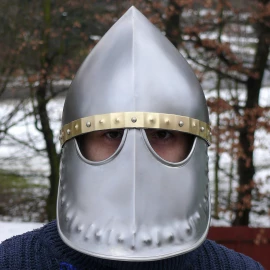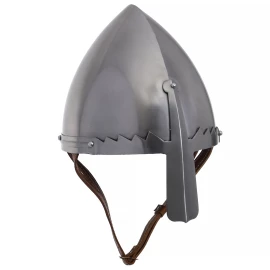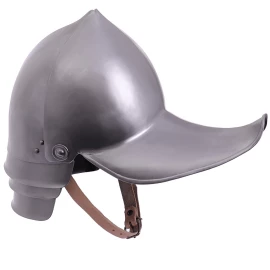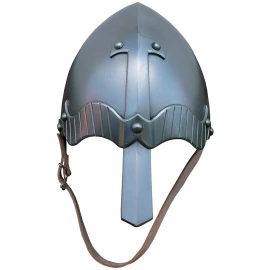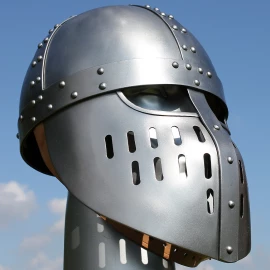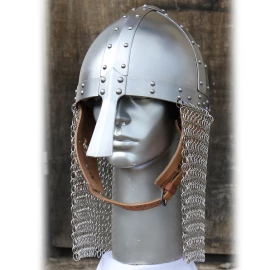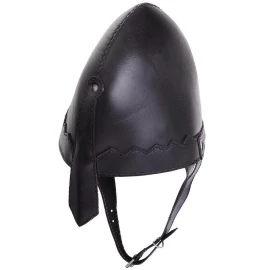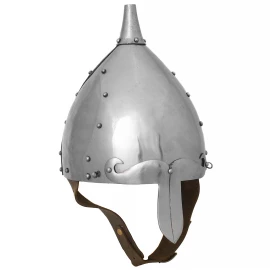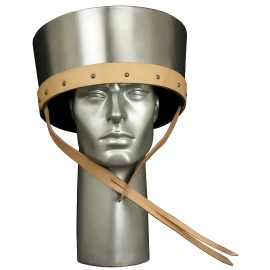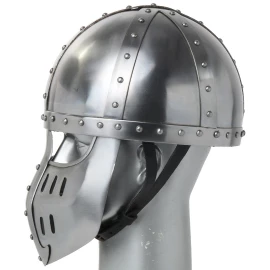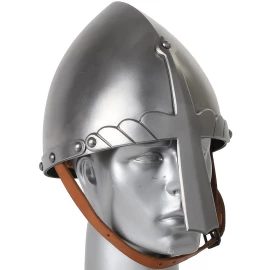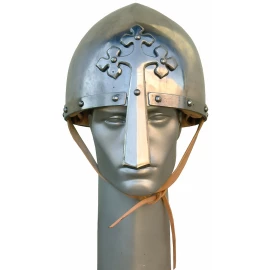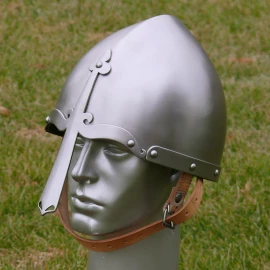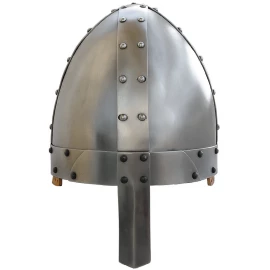Spangenhelm
The Spangenhelm was a popular medieval European combat helmet design of the Early Middle Ages. The name is of German origin. Spangen refers to the metal strips that form the framework for the helmet and could be translated as braces, and -helm simply means helmet. The strips connect three to six steel or bronze plates. The frame takes a conical design that curves with the shape of the head and culminates in a point. The front of the helmet include a nose protector (a nasal). This kind of helmet spreaded throughout the central Europe due to Persian influence. More information...
Spangenhelm
- This helmet is battle-ready - suitable for re-enactment
- Helmet bowl: Gauge of plate 16 / 1.6mm
- Nasal: Gauge of plate 14 / 2.0mm
- Delivery includes inner canvas liner and leather chin strap
- Made by Marshal Historical
The Spangenhelm arrived in Western Europe by way of what is now southern Russia and Ukraine, spread by nomadic Iranian tribes such as the Scythians and Sarmatians who lived among the Eurasian steppes. By the 6th century it was the most common helmet design in Europe and in popular use throughout the Middle East. It remained in use at least as late as the 9th century. The Spangenhelm was an effective protection that was relatively easy to produce. Weakness of the design were its partial head protection and its jointed construction. It was replaced by similarly shaped helmets made with one-piece skulls (nasal helms), kettle hats and eventually the Great helm or casque.
Available in two sizes:
- Size M = 60~61cm Perimeter
- Size L = 63~64cm Perimeter
We are here for you


